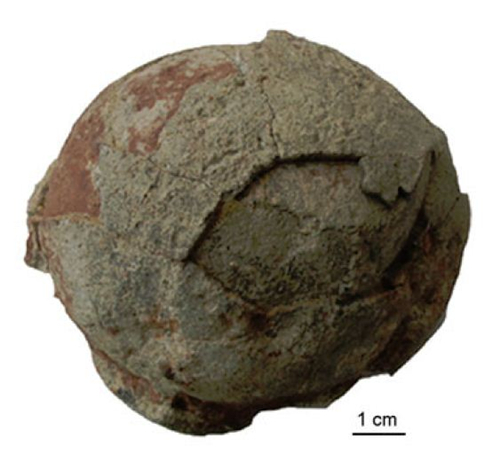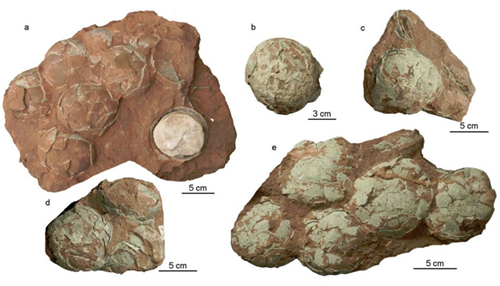

| Visitors Now: | |
| Total Visits: | |
| Total Stories: |

| Story Views | |
| Now: | |
| Last Hour: | |
| Last 24 Hours: | |
| Total: | |
New Oofamily of Dinosaur Egg Found From the Upper Cretaceous of Tiantai Basin, Zhejiang Province
Paleontologists from the Institute of Vertebrate Paleontology and Paleoanthropology (IVPP), Chinese Academy of Sciences, found more than a dozen eggs from the lower member of the Late Cretaceous Chichengshan Formation in Shuangtang, Qiaoxia and Brewery in the Tiantai Basin. These eggs have a distinctive eggshell microstructure not seen in other types of dinosaur egg.

Image by Wang Qiang
The Upper Cretaceous strata of the Tiantai Basin consist of the Laijia Formation and the overlying Chichengshan Formation. The Laijia Formation is composed of lacustrine sediments such as red silty mudstones and granule conglomerates, with many layers of interbedded laminated tuffs. The Chichengshan Formation can be subdivided into two members.
These small spheroid or nearly spheroid eggs are irregularly arranged in the nest. Eggshell thickness, 2.4–4.0 mm. Outer surface of the eggshell is coarsely decorated. Cone layer is thin with 0.18–0.25 mm thick, about 1/20–1/4 of eggshell thickness. Three distinct zones of the columnar layer are observable: (1) Horizontal growth lines develop in the inner zone, (2) Light and dark bands with varying thickness and lengths develop in the medial zone, (3) Secondary eggshell units are loosely arranged in the outer zone. The pore cannel is irregular. With occurrence of numerous, tiny secondary eggshell units within the pore canals, three distinct zones of the columnar layer are significantly different from other dinosaur egg types found in the world. Thus, they are considered to be a new oofamily, Stalicoolithidae.

(Image by Wang Qiang)
“The newly discovered dinosaur eggs are very important for understanding the composition of the Tiantai dinosaur eggs oofauna and providing new materials to study the eggshell formation and evolution of the dinosaur eggs in the Cretaceous”, said corresponding author WANG Xiaolin of the IVPP.
“Our re-examination of the holotype of Shixingoolithus erbeni from the Upper Cretaceous Pingling Formation, Guangdong Province, indicatess that it was erroneously attributed to Spheroolithidae, and should be transferred to stalicoolithid. Stalicoolthids represents a new model of dinosaur eggshell and thus sheds new light on the formation and evolution of amniotic eggshells”, said first author WANG Qiang of the IVPP.
This work was supported by the National Natural Science Foundation of China, the National Science Fund for Distinguished Young Scholars, the National Key Basic Research Program of China, and the Key Laboratory of Evolutionary Systematics of Vertebrates, IVPP, CAS.
Institute of Vertebrate Paleontology and Paleoanthropology, Chinese Academy of Sciences


